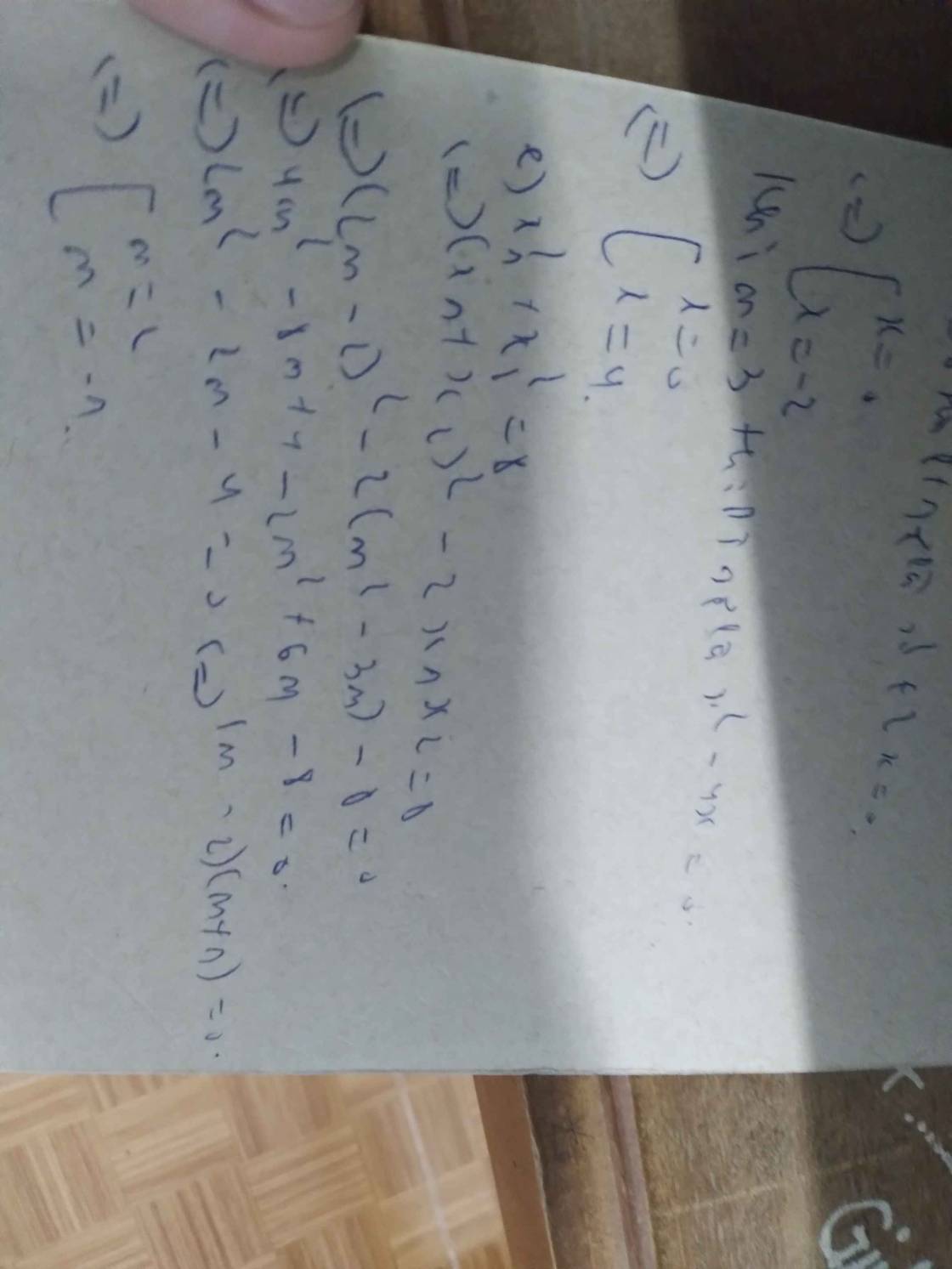1. cho pt x2 -2(m-1)x+m2-2=0
a. tìm m để pt có hai nghiệm phân biệt
b. tìm m để pt có 1 nghiệm bằng 2 và tính nghiệm còn lại
c. tìm m để pt có hai nghiệm trái dấu.
2. cho pt x2 + 2( m+1)x +m2 + 3 =0 . tìm m để
a. pt có nghiệm
b. pt có hai nghiệm dương phân biệt
c.pt có 1 nghiệm gấp đôi nghiệm còn lại
3. cho pt x2 - (m+2)x +m + 5 = 0 tìm m để
a. pt có hai nghiệm trái dấu
b. pt có hai nghiệm phân biệt
c. pt có hai nghiệm phân biệt x1 x2 thỏa x12 + x22 =23
d. pt có hai nghiệm âm phân biệt
4. cho pt mx2 - 2(m+7)x + m -4=0 tìm m để
a. pt có 1 nghiệm
b. pt có hai nghiệm phân biệt thỏa x1x2 - 4 = 2x1 + 2x2.
mọi người giúp em với mai em phải kiểm tra rồi . em cảm ơn






Bài 3:
a: Để pt có hai nghiệm trái dấu thì m+5<0
=>m<-5
b: \(\text{Δ}=\left(m+2\right)^2-4\left(m+5\right)\)
\(=m^2+4m+4-4m-20=m^2-16\)
Để phương trình có hai nghiệm phân biệt thì m^2-16>0
=>m>4 hoặc m<-4
c: x1^2+x2^2=23
=>(x1+x2)^2-2x1x2=23
=>(m+2)^2-2(m+5)=23
=>m^2+4m+4-2m-10-23=0
=>m^2+2m-29=0
hay \(m=-1\pm\sqrt{30}\)
d: Để pt có hai nghiệm âm phân biệt thì
\(\left\{{}\begin{matrix}m\in R\backslash\left[-4;4\right]\\m+2< 0\\m+5>0\end{matrix}\right.\Leftrightarrow\left\{{}\begin{matrix}m\in R\backslash\left[-4;4\right]\\-5< m< -2\end{matrix}\right.\Leftrightarrow m\in[-4;-2)\)